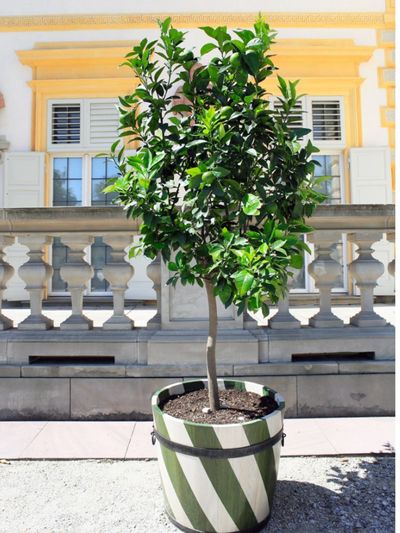Lime, or any other citrus, can take mild frost and cold temps, but potted lime trees cannot. Whatever variety of container grown lime tree you choose, the hardiness zone is one zone higher than the USDA recommended zone. So if you plant a lime that has a USDA of 7, the container grown lime tree has a hardiness zone of 8.
Step 1: Choose a Suitable Variety of Lime Tree
A dwarf variety of lime tree is the best choice when growing lime trees in containers. Regardless, the tree will undoubtedly need repotting after about three to four years, or you can remove the tree from the pot, prune the roots (take 2-3 inches (5-8 cm.) off) and one-third of the foliage, and then repot with fresh potting soil. The size of the tree is directly related to the size of the container. Some examples of lime varietals suitable for container grown lime trees include the following:
Bearss lime, also known as Tahitian lime or Persian lime, which is a common variety that grows to 20 feet (6 m.) with seedless fruit Kaffir lime, which is a bush variety that is best kept pruned to under 10 feet (3 m.) and whose aromatic leaves are used in Asian cuisine Mexican lime, aka key lime or West Indian lime, which is another bushy variety around 15 feet (5 m.) tall with 2-inch (5 cm.) strongly acidic fruit Palestinian lime, a sweet round, milder fruit that makes great limeade
Step 2: How to Plant Potted Lime Trees
Container grown lime trees, like all the citrus trees, love lots of sun and moist, well-draining soil. Choose a location with at least eight hours of direct sun. Situating against a south facing wall, building or fence is ideal and will also protect the tree from cold northern winds. Plant your lime tree in the spring in a neutral pH, moistened potting medium. The container should have drainage holes as citrus trees do not like “wet feet” and should be at least 15 gallons (57 L.) (an old whiskey barrel is ideal). Include a little slow release fertilizer such as Osmocote. Heavy duty coasters will enable you to easily move the tree. Since citrus trees need high humidity, place the plant over a pebble tray or mist daily and maintain a consistent watering schedule lest the lime tree loses leaves.
Step 3: Care for Lime Trees in a Pot
Water is of primary importance to your potted lime tree and is gauged by the size of the tree and temperatures. Reduce watering prior to winter to avoid the possibility of stimulating growth that may become damaged in cooler temps. Overwatering can become an issue, but don’t let the tree dry out completely! Allow the upper inch (3 cm.) of the soil to dry out before watering. Metal and ceramic containers (and plastic) stay wet longer than wood or clay. Fertilize the lime tree monthly until midsummer, and never after July. Prune your container grown lime trees. Watch for any suckers that form and immediately prune them, not only to maintain the shape of the tree but to keep the growth compact and promote better fruit production. Thin branches to 4-6 inches (10-15 cm.) apart for fewer but larger fruit set, in the latter part of winter. Bring the potted lime tree indoors or in a garage if temps drop to 40 degrees F. (4 C.) and reduce watering. Keep an eye out for pests, like aphids and scale, on the lime leaves. Insecticidal soap will control the aphids and horticultural oil will take care of the scale, both of which support the growth of sooty mold. When growing lime trees in containers, keep in mind that the tree is under more stress than that grown in an orchard or garden, so constant maintenance is the key to a healthy plant and gorgeous fruit. Margarita, anyone?
